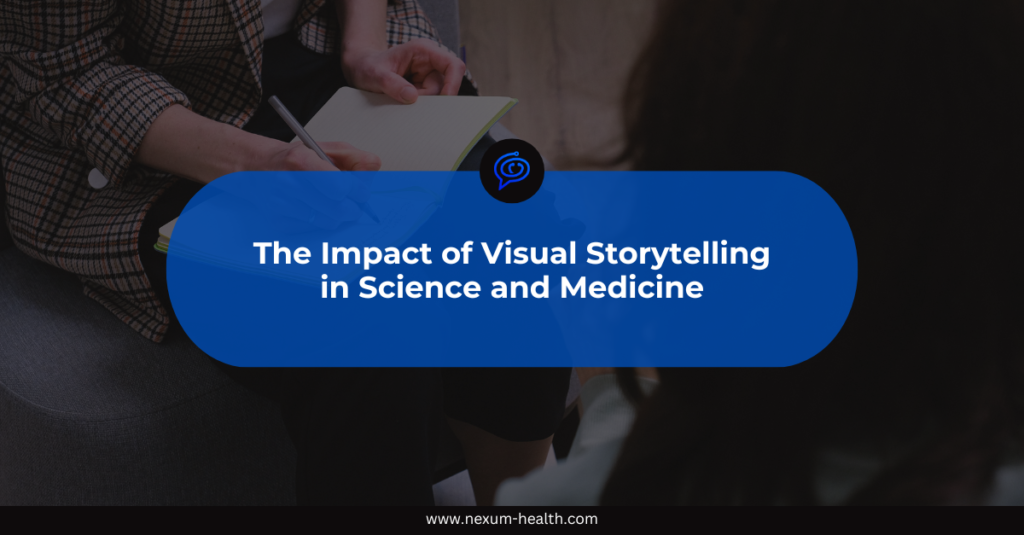In medical translations, where every word holds potential consequences for patient health and well-being, precision is not merely a desirable attribute; it’s an absolute necessity. The accuracy and reliability of medical translations play a pivotal role in ensuring seamless communication between healthcare providers and patients, bridging linguistic barriers to facilitate understanding and informed decision-making. However, the stakes of mistranslation extend far beyond mere comprehension, they can directly impact patient outcomes, treatment efficacy, and ultimately, quality of life.
Various Documents Requiring Precise Translation
Medical translation encompasses a broad spectrum of documents vital for ensuring effective healthcare delivery and patient safety. Here are some key documents that necessitate accurate translation to uphold standards of care and ethical practice:
Patient Records and Medical Histories: At the heart of personalised medicine lies the comprehensive understanding of a patient’s medical journey. Accurate translation of patient records and medical histories ensures that healthcare providers have access to vital information regarding diagnoses, treatments, allergies, and past interventions, fostering continuity of care and informed decision-making.
Informed Consent Forms: In medical ethics, informed consent stands as a foundation of autonomy and respect for patient rights. Translating informed consent forms with precision is paramount, as it authorises patients to comprehend the intricacies of proposed treatments, potential risks, and alternative options, thereby facilitating genuine informed consent and fostering a collaborative patient-provider relationship built on trust and transparency.
Clinical Trials Documentation: As the frontier of medical innovation, clinical trials rely on the harmonisation of data and protocols across diverse linguistic fields. Accurate translation of clinical trial documentation, including protocols, participant information sheets, and adverse event reports, is essential to ensure the integrity and validity of research findings, uphold ethical standards, and promote the safety of trial participants worldwide.
Medical Device Manuals and Instructions: From complex surgical instruments to life-saving implantable devices, medical technology has revolutionised patient care. Translating manuals and instructions for medical devices with precision is imperative to enable healthcare professionals and end-users to operate equipment safely, troubleshoot potential issues, and maximise therapeutic benefits while minimising the risk of errors or complications.
Regulatory Documents: In healthcare regulation, compliance hinges on the accurate translation of regulatory documents, submissions, and labelling requirements. Whether seeking market authorisation for a novel drug or navigating the details of medical device registration, precise translation ensures alignment with regulatory standards and facilitates market access while safeguarding patient safety and public health.
Importance of Accurate Translation for Patient Safety and Understanding
The ramifications of inaccurate translation reverberate far beyond linguistic nuances, they permeate patient care, causing risks that threaten the very essence of healthcare delivery:
Misdiagnosis and Treatment Errors: Inaccurate translation of medical records or diagnostic reports can lead to misinterpretation of clinical findings, misdiagnosis of conditions, and inappropriate treatment interventions, placing patients at heightened risk of harm and compromising their clinical outcomes.
Medication Errors: Mistranslation of medication labels, dosage instructions, or contraindications may result in medication errors, adverse drug reactions, or therapeutic failures, posing significant threats to patient safety and well-being.
Lack of Informed Consent: Inadequate translation of informed consent forms undermines the principle of patient autonomy, impeding patients’ ability to comprehend the nature of proposed treatments, associated risks, and available alternatives, thereby eroding trust and compromising the ethical foundation of medical practice.
Communication Barriers: Language barriers erect formidable walls between healthcare providers and patients, impeding the exchange of critical health information, inhibiting meaningful engagement, and perpetuating disparities in healthcare access and outcomes based on linguistic or cultural factors.
Complexity of Medical Translations
The journey of translation is a nuanced exploration that transcends mere word substitution. It entails crossing through layers of culture, context, and communication, where each linguistic shift carries the weight of cultural nuances, historical connotations, and socio-political undertones. It’s an art of interpretation, demanding a deep understanding of both source and target languages to convey not just the literal meaning, but the essence and intent behind the words.
Cultural Considerations: Language serves as the vessel through which culture finds expression, and within healthcare, cultural sensitivity is paramount. Effective medical translation demands an acute awareness of cultural nuances, customs, and beliefs surrounding health and wellness. From the subtle nuances of language to deeply ingrained cultural practices, translators must avoid a myriad of cultural variables to ensure that medical communication resonates authentically with diverse patient populations. Understanding cultural perspectives on illness, treatment modalities, and healthcare decision-making is essential for fostering trust, enhancing patient engagement, and promoting treatment adherence across cultural divides.
Legal Considerations: The intersection of law and medicine gives rise to a complex web of legal considerations that permeate medical translation. From informed consent forms to regulatory submissions, accurate translation is not merely a matter of linguistic fidelity, it is a legal imperative. Translators must navigate diverse legal frameworks, regulatory requirements, and ethical standards to ensure compliance while safeguarding patient rights and confidentiality. Failure to accurately convey legal terminology or adhere to regulatory mandates can have far-reaching legal ramifications, exposing healthcare providers and institutions to liability risks and compromising patient safety.
Recognising Specialised Knowledge and Skills
Medical Expertise: At the core of effective medical translation lies a profound understanding of the details of medical terminology, concepts, and procedures. Translators must possess specialised knowledge spanning anatomy, physiology, pharmacology, and disease pathology to accurately convey complex medical information with precision and clarity. Whether translating clinical trial protocols, medical records, or pharmaceutical labelling, proficiency in medical terminology is indispensable for ensuring accuracy, coherence, and reliability in translation.
Technical Proficiency: The advent of digital technologies has revolutionised healthcare delivery, ushering in a new era of technical complexity in medical translation. Translators must be adept at exploring electronic health records (EHRs), medical imaging software, and telemedicine platforms to facilitate seamless communication and data exchange between healthcare providers and patients. Technical proficiency in document formatting, localisation, and quality assurance is essential for delivering translations that are not only linguistically accurate but also user-friendly and compatible with digital platforms and devices.
Ethical Awareness: Ethical considerations loom large, demanding a steadfast commitment to integrity, confidentiality, and patient welfare. Translators often encounter sensitive and confidential information in the course of their work, necessitating adherence to strict ethical standards and professional codes of conduct. Upholding patient confidentiality, maintaining impartiality, and handling ethical dilemmas with diligence and integrity are essential for preserving trust and credibility in medical translation.
Introduction to CAT Tools
Computer-Assisted Translation (CAT) tools emerge as pivotal instruments, playing a distinct role that sets them apart from the domain of machine translation. Unlike machine translation systems, which operate autonomously to generate translations based on algorithms and pre-existing data, CAT tools stand as collaborative aids to human translators, enriching their capabilities and efficiency without compromising the linguistic quality and contextual understanding.
Distinguishing CAT Tools from Machine Translation
CAT tools and machine translation represent divergent approaches to language processing, each with its unique characteristics and functionalities. While machine translation operates as a fully automated system, relying solely on algorithms and statistical models to generate translations, CAT tools adopt a more nuanced and interactive approach. Rather than replacing human translators, CAT tools work in tandem with them, offering a suite of features designed to enhance productivity, consistency, and collaboration throughout the translation process.
Explaining the European Association of Machine Translation’s Definition and Functionality of CAT Tools
According to the European Association for Machine Translation (EAMT), CAT tools are defined as software applications that assist human translators in their work by storing and managing translation units, facilitating terminology consistency, and automating repetitive tasks. Unlike machine translation systems, which operate independently, CAT tools allow translators with a range of interactive functionalities customised to optimise their workflow and maximise efficiency.
At the heart of CAT tools lies the concept of segment-based translation, where source texts are divided into manageable units or segments, such as sentences or paragraphs. These segments, along with their corresponding translations, are stored in a database known as a translation memory (TM). When translating new content, CAT tools analyse the source text and retrieve relevant translation suggestions from the TM, allowing translators to take advantage of existing translations, maintain consistency, and expedite the translation process.
Beyond translation memory, CAT tools offer a plethora of features designed to streamline the translation workflow and enhance productivity. These include terminology management tools, which enable translators to create and maintain glossaries of specialised terminology, ensuring consistency and accuracy across projects. Additionally, CAT tools incorporate quality assurance checks to identify and correct errors, as well as project management functionalities to facilitate collaboration, track progress, and manage resources efficiently.
How CAT Tools Operate
Using CAT tools in the translation process initiates with a fundamental step: text segmentation. This involves breaking down the source text into manageable units, typically sentences or paragraphs. Such segmentation serves as the cornerstone for a structured approach to translation. By dissecting the text into smaller, more digestible parts, CAT tools provide translators with a clear roadmap, allowing them to tackle each segment individually. This meticulous approach not only enhances coherence and accuracy but also allows translators to navigate through intricate content with precision and efficiency.
When confronted with new content, CAT tools meticulously analyse the source text and scour the TM for segments that match or closely resemble the current context. Upon finding a match, the tool retrieves the corresponding translation, thereby enabling translators to leverage existing translations and maintain uniformity across documents. This intelligent reuse of translations not only expedites the translation process but also ensures a consistent and accurate interpretation, particularly in domains characterised by repetitive or standardised content.
Furthermore, CAT tools integrate advanced suggestion mechanisms that offer real-time recommendations and predictive typing capabilities. As translators input text, the tool diligently analyses the content and provides suggestions based on the context and the contents of the TM. These suggestions may encompass previously translated segments, suggested terminologies, or predictive text based on the ongoing input. By pre-emptively addressing translators’ needs and providing pertinent suggestions, CAT tools streamline the translation process, increase consistency, and augment productivity.
Advantages of CAT Tools in Medical Translation
CAT tools are invaluable assets in the field of medical translation, offering a host of advantages that significantly enhance productivity and quality. One of the key benefits of CAT tools is their ability to streamline the translation process, allowing translators to work more efficiently and effectively. By automating routine tasks such as text segmentation and formatting, CAT tools enable translators to focus their energy on the actual translation of content, rather than on administrative or technical tasks. This results in faster turnaround times and increased throughput, ultimately improving productivity and enabling translators to handle larger volumes of work.
Additionally, CAT tools facilitate the reuse of translations through the use of translation memory. This feature allows translators to leverage previously translated segments across projects, ensuring consistency and accuracy in terminology and style. By building upon existing translations, rather than starting from scratch, translators can expedite the translation process while maintaining a high level of quality and coherence. Furthermore, CAT tools provide intelligent suggestions and predictive typing capabilities that further enhance productivity by offering real-time suggestions based on the content of the translation memory and the context of the text being translated.
In terms of quality, CAT tools play a crucial role in ensuring consistency and accuracy in medical translations. Through the use of translation memory and terminology management features, CAT tools enable translators to maintain uniformity in terminology usage and style, reducing the risk of errors, ambiguities, and inconsistencies in translated content. Furthermore, CAT tools incorporate built-in quality assurance checks that flag potential errors, inconsistencies, and mistranslations in translated content. Translators can perform automated checks for spelling errors, grammatical inconsistencies, and formatting issues, ensuring that translations adhere to the highest standards of quality and precision.
Another advantage of CAT tools in medical translation is their ability to streamline terminology management. CAT tools provide translators with access to dedicated terminology databases and glossaries, allowing them to manage specialised medical terminology efficiently. Translators can access predefined terminology lists, add new terms, and ensure consistency in terminology usage throughout the translation process. This meticulous management of terminology enhances the accuracy and clarity of medical translations, ensuring that key terms are translated consistently and accurately across documents.
Challenges and Limitations of CAT Tools
Users have raised various qualitative issues regarding CAT tools, highlighting areas where improvements are needed to enhance usability and overcome productivity barriers. One qualitative issue raised by users is the complexity of CAT tool interfaces and functionalities. While CAT tools offer a wide range of features aimed at enhancing productivity and quality, some users find the interface cumbersome and difficult to use. The multitude of options and settings can be overwhelming, particularly for new users or those unfamiliar with the software. As a result, users may struggle to fully utilise the capabilities of the CAT tool, leading to suboptimal performance and productivity.
Another challenge faced by users is the compatibility and interoperability of CAT tools with other software and systems. CAT tools often operate as standalone applications, requiring users to manually import and export files between different software platforms. This lack of seamless integration can lead to inefficiencies and workflow disruptions, particularly in collaborative environments where multiple tools and systems are used concurrently. Additionally, compatibility issues with file formats or operating systems may further hinder usability and productivity, forcing users to resort to manual workarounds or third-party conversion tools.
Usability issues aside, several factors can impact the usability and effectiveness of CAT tools, thereby creating potential productivity barriers. One such factor is the quality and consistency of the TM database. While TM is designed to enhance productivity by storing and reusing translations, its effectiveness depends on the quality and relevance of the stored segments. Inaccurate or outdated translations in the TM can lead to inconsistencies and errors in the translated content, undermining the overall quality and productivity of the translation process.
Furthermore, the effectiveness of CAT tools is contingent upon the proficiency and expertise of the user. While CAT tools offer advanced features and functionalities, their optimal utilisation requires a certain level of skill and familiarity with the software. Users who lack sufficient training or experience may struggle to take advantage of the full potential of the CAT tool, leading to decreased productivity and performance. Additionally, language-specific challenges, such as the availability of resources and support for less commonly used languages, can further impact usability and productivity, particularly for translators working in niche or specialised areas.
Conclusion and Future Perspectives
CAT tools emerge as indispensable assets, offering a multitude of advantages that reform the translation process and elevate the quality of translated content. Despite the challenges and limitations faced by users, CAT tools continue to play a pivotal role in facilitating efficient, accurate, and consistent translation in the healthcare industry.
The advantages of using CAT tools in medical translation are manifold. These tools enhance productivity by streamlining the translation process, automating routine tasks, and facilitating the reuse of translations through sophisticated features such as translation memory and intelligent suggestions. By leveraging advanced functionalities, CAT tools enable translators to work more efficiently, handle larger volumes of work, and deliver translations with greater speed and precision. Additionally, CAT tools promote consistency and accuracy in medical translations by ensuring uniformity in terminology usage, style, and formatting. Through the use of dedicated terminology databases and quality assurance checks, CAT tools enable translators to maintain the highest standards of quality and coherence in translated content.
However, despite the numerous advantages of CAT tools, there remain concerns about usability and the need for ongoing software improvements. Users have raised qualitative issues regarding the complexity of CAT tool interfaces, the lack of seamless integration with other software platforms, and challenges related to TM quality and user proficiency. Addressing these concerns requires a concerted effort from developers to enhance the usability, interoperability, and effectiveness of CAT tools. By prioritising user experience and incorporating user feedback into software development processes, developers can advocate for ongoing improvements that address the evolving needs of translators and enhance the overall translation experience.
Looking to the future, there is immense potential for further advancements in CAT tool technology. With the continued integration of artificial intelligence, machine learning, and natural language processing techniques, CAT tools can evolve to offer more sophisticated features and capabilities. Future CAT tools may incorporate advanced predictive analytics, real-time collaboration, and adaptive learning algorithms to further enhance productivity, accuracy, and usability in medical translation. By implementing innovation and fostering collaboration between developers, translators, and industry stakeholders, the future of CAT tools holds promise for reforming medical translation and improving healthcare communication on a global scale.






